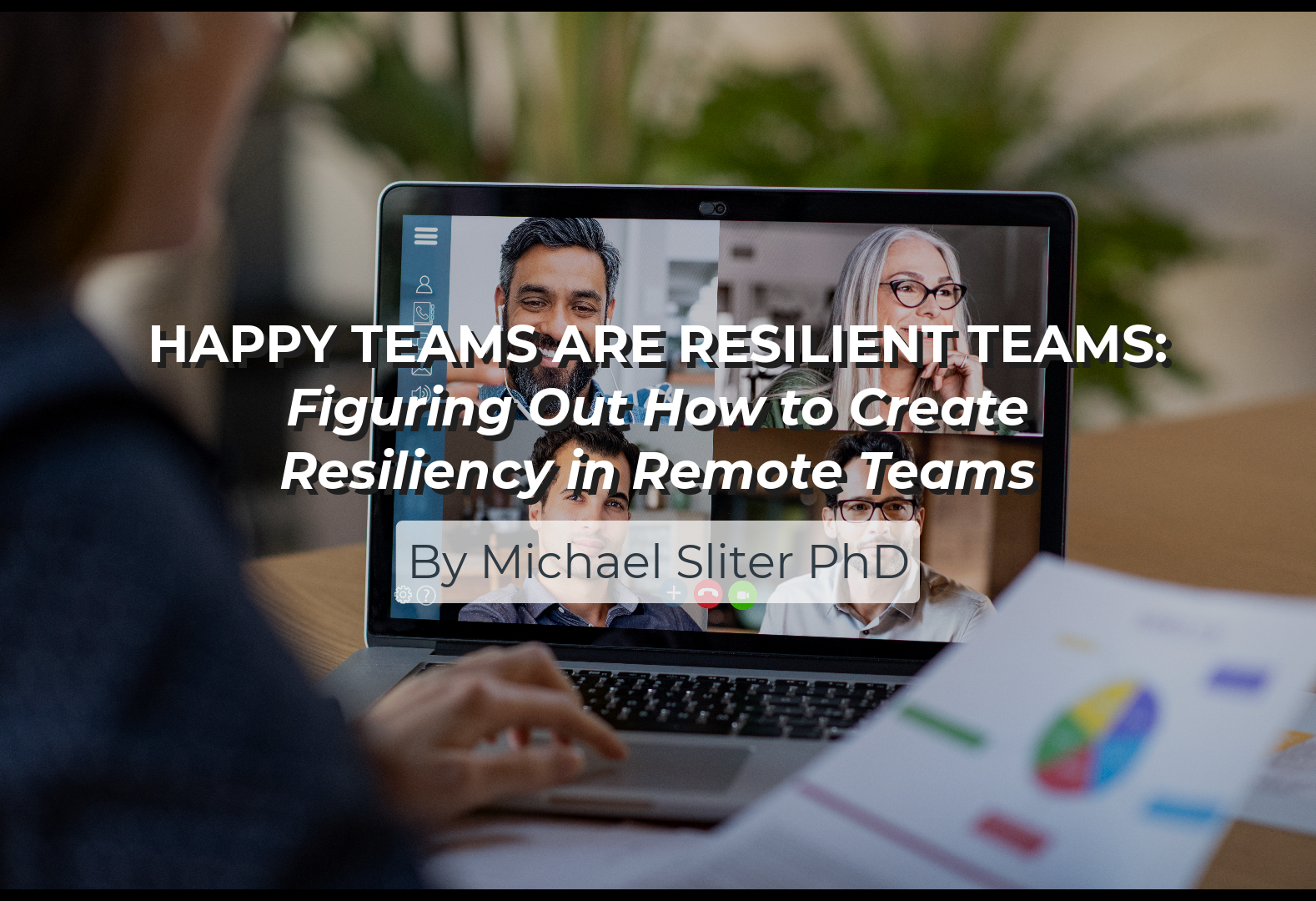HAPPY TEAMS ARE RESILIENT TEAMS: Figuring Out How to Create Resiliency in Remote Teams.
Accurately understanding your team is even more crucial and potentially more difficult than it was before 2020. We’ve seen a trend where team development seems to have been set aside as leaders are focusing on putting out fires and dealing with the immediate concerns about productivity and meeting their goals, all while balancing a transition to a more remote technology driven work environment. More specifically, our coaching sessions reveal that many senior leaders are putting increasing hours to fill in gaps that have resulted from the crisis. Remote team members are doing much the same and have found often that work takes longer than what they could accomplish in an office setting.
At the same time, team members see brand new challenges, and may be uncomfortable revealing what they do not understand or what challenges they see. The flow of information and expertise is often hindered simply due to the existing communication barriers, or because they do not have clarity on what they can, should, or need to share. They also may express feelings of being overwhelmed both by their jobs and by the general isolation of their role. As a leader, you are likely striving to create connection with them but communicating the benefits of a mutually supportive team will allow your team members to find support from multiple sources. We recommend a focus on the Growth Leadership Framework and on three areas as you build or re-build your team: Trust, Communications and Team Knowledge (personal), Communication and Trust.
Trust
Gone (at the moment at least) are the days of trust falls and ropes courses. Trust can be diminished just because the changes in their personal and work lives can make them feel less secure and more defensive. A casual, how’s your project going, can be met with skepticism or concern making it important for leader’s to over communicate their intentions. As a leader, lead your team through a discussion of trust—what it means, personally, to individuals, and what makes them trust and feel trusted. Familiarize your team with the concepts of always sharing intentions, and leveraging a Trust Bank, where certain actions make deposits or withdrawals, brainstorming what those might be for each team member.
Creating space for personal team knowledge
Personal lives are necessarily moving into the workplace. I have met many children, spouses, and pets in a variety of contexts over the past few weeks. It is critical toward a smooth understanding to give team members a chance to share—within their comfort—what is happening in their lives. Some are looking for opportunities to talk about what is happening in their lives, while others are more reserved. Starting team meetings by allowing people to share updates about their lives, or even exploring their pasts, histories, or hobbies. One easy activity is to have team members share a story about something in their home office or introduce a pet. We have seen bubble gum blowing contests, remote games, background contests, and best “dad” joke as examples of ways to lighten up the interactions. Humor and personal connections are two key stress relievers.
Communication/Social Style
Communication style makes a big difference, but arguably even more so in remote scenarios when the barriers to communication are typically greater. Some tend to be more task-driven at the best of times, and for them, communication can fall to the wayside. Meanwhile, those who lean more heavily toward people may be struggling that they are not creating the connections that they crave. Others tend to become more extreme in their asking or telling assertiveness styles. We recommend spending time on change leadership and developing a refreshed set of team norms for the new normal. A team that knows itself accurately grows itself more effectively
Building high performing teams is not easy but there are a number of options for effectively doing so. The Growth Leadership Framework provides an ideal focus for some of these efforts. The best leaders are taking time to expand and grow their teams during this time.


